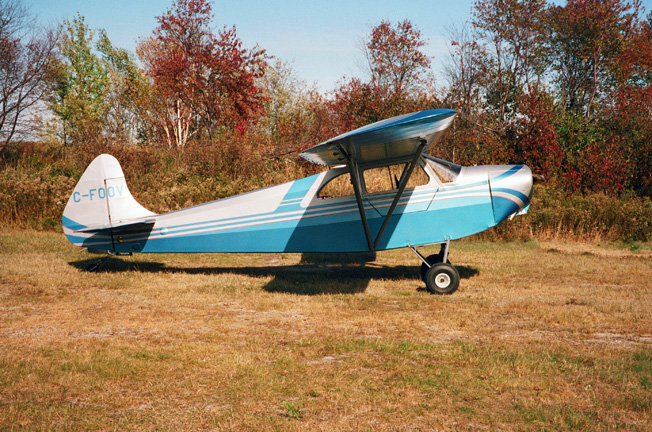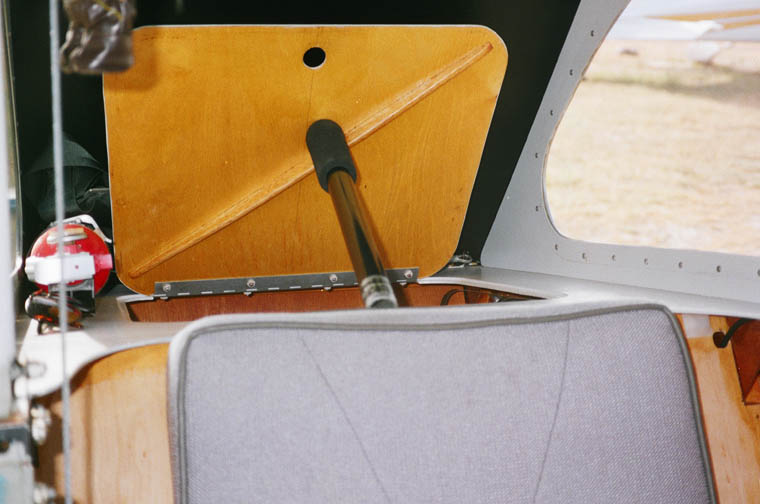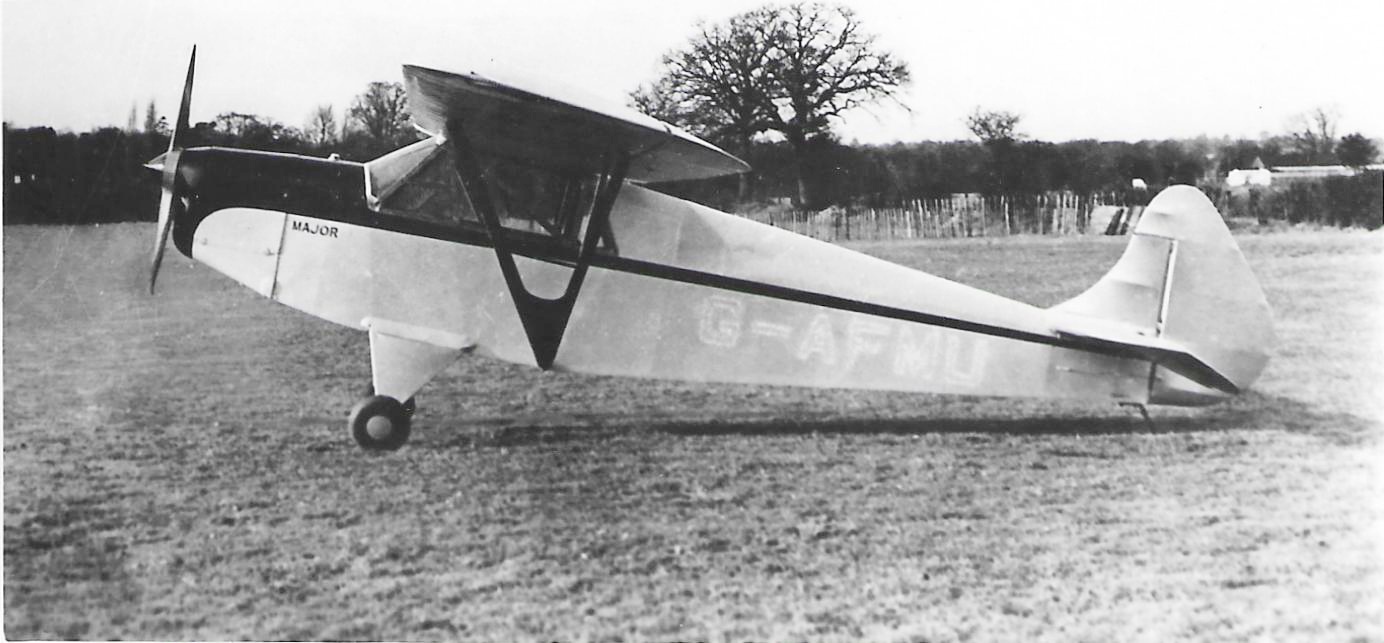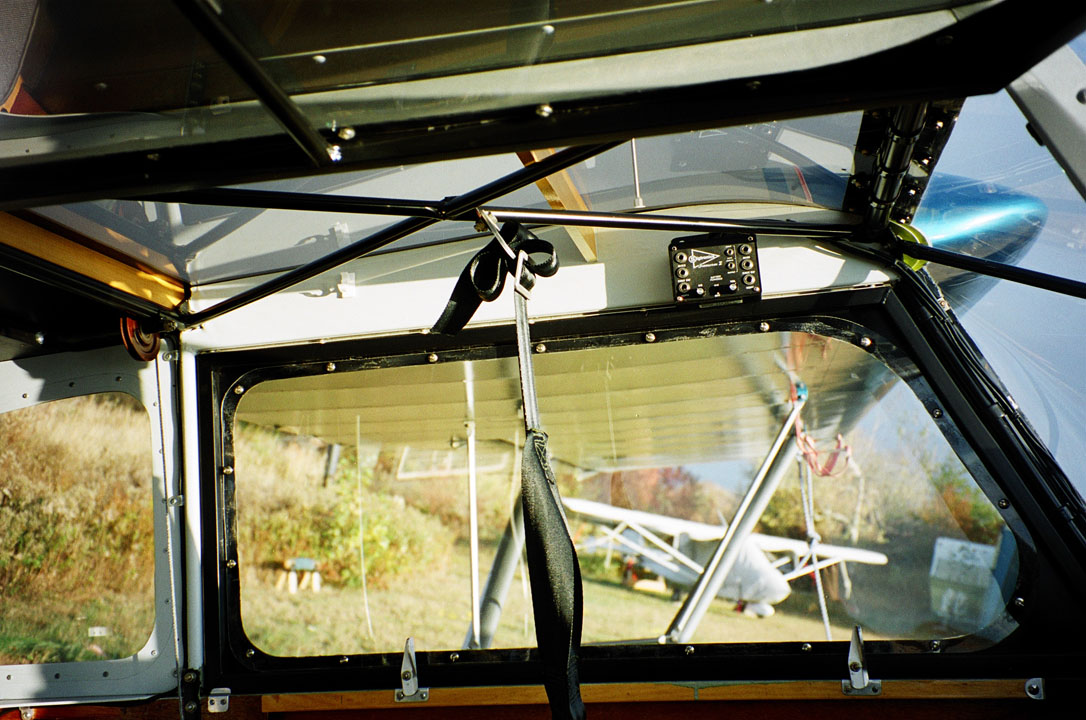Originally designed as the Luton L.A.5 Major by C.H. Latimer-Needham in 1939, the prototype G-AFMU first flew just before WWII, making it among the last and most modern aircraft to come from the classic era of aviation.
In 1943 a fire destroyed the factory and the prototype, leaving only the plans which were slightly damaged. The Luton Major L.A.5 was then updated by Latimer-Needham and A.W.J.G Ord-Hume and was sold as plans for the home built market. Latimer-Needham and Mr Ord-Hume were and are highly accomplished gentleman, both engineers and authors who have made significant contributions to both certified and experimental aviation. No other home built aircraft sports such a linage. A number of these planes have been constructed and are currently flying the Common Wealth.
The Luton Major LA5 was acquired by the late Chris Falconar, who continuously modernized it over the next 30 years, incorporating improvements made by Stuart Noble, the builder of C-FOOV pictured below. The current version, being different from the original (and already excellent) Luton Major was renamed the Cub Major for the North American market and to help differentiate it from it's forbearer. The Luton "Cub" Major is the ideal tandem home built for craftsman who prefer to work in wood while not sacrificing strength and durability.
The Cub Major is primarily constructed of wood using conventional techniques with metal fittings, an (optional) 4130 upper fuselage, Cub style gear, and features easily folded wings, dual controls, and supports a verity of certified and experimental engines.
In 1943 a fire destroyed the factory and the prototype, leaving only the plans which were slightly damaged. The Luton Major L.A.5 was then updated by Latimer-Needham and A.W.J.G Ord-Hume and was sold as plans for the home built market. Latimer-Needham and Mr Ord-Hume were and are highly accomplished gentleman, both engineers and authors who have made significant contributions to both certified and experimental aviation. No other home built aircraft sports such a linage. A number of these planes have been constructed and are currently flying the Common Wealth.
The Luton Major LA5 was acquired by the late Chris Falconar, who continuously modernized it over the next 30 years, incorporating improvements made by Stuart Noble, the builder of C-FOOV pictured below. The current version, being different from the original (and already excellent) Luton Major was renamed the Cub Major for the North American market and to help differentiate it from it's forbearer. The Luton "Cub" Major is the ideal tandem home built for craftsman who prefer to work in wood while not sacrificing strength and durability.
The Cub Major is primarily constructed of wood using conventional techniques with metal fittings, an (optional) 4130 upper fuselage, Cub style gear, and features easily folded wings, dual controls, and supports a verity of certified and experimental engines.
Upgrades from the original Luton Major include but are not limited to:
1. Structure upgraded and re-stressed for modern engines and safety.
2. Provision for toe breaks.
3. Bigger wheels and tires.
4. Wing lift struts redesigned for safety and ease of construction.
5. Cabin Structure redesigned for maximum strength.
6. Redesigned fuel tank and fuel system.
7. Wing spar design cleaned up and fold mechanism improved.
8. Many fittings simplified using aluminum alloy.
9. Two bearings in control torque tube, not three (a big no no).
Options
-15 gallon fuel tank
-4130 steel tube upper cabin structure to simplify fittings and eliminate many nuts and bolts, and provide additional strength.
-Closed gap Ailerons
-Rudder Pedals with toe brakes.
-Delrin bearings throughout the control system including control surface hinges. These are easy to make and do not need lubrication in service. No more steel to rust, no more ball bearings. Standard aircraft bearings may still be used.
Engine Choices
Mikron 62-80hp, Rotax 912, Jabiru 2200, UL Power 260, Lycoming 0-145, Continental a65, a75, Revmaster, 2332cc VW, Hummel 2400cc, 80hp Sauer and Limbach




Copyright TKCO INC
Photo of the original Luton Major in England with the 62hp Czech made 4 cylinder inline Walter Mikron II. Iinterestingly the the Mikron line is still being produced by Parma Technik.


